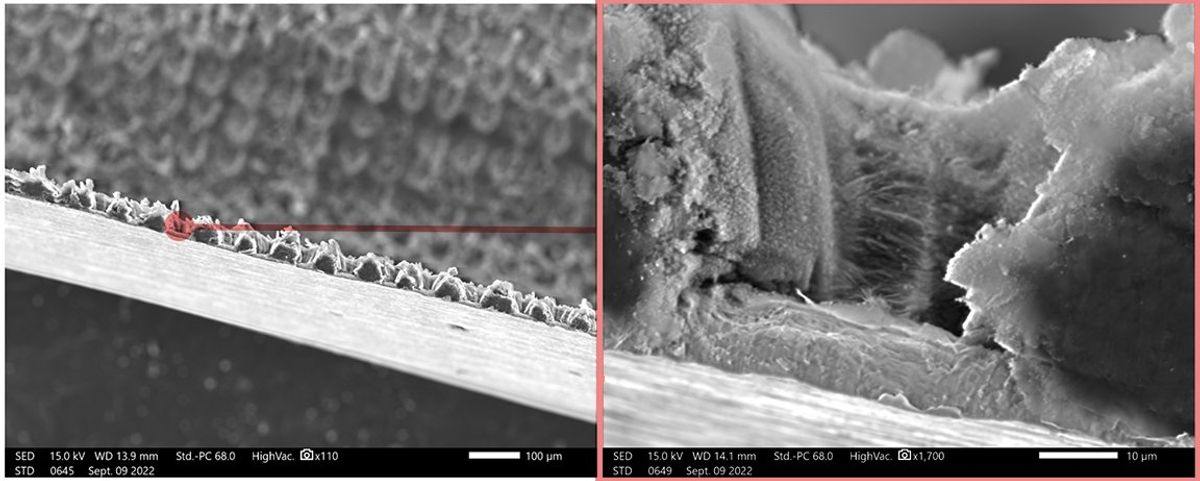This article is part of our exclusive IEEE Journal Watch series in partnership with IEEE Xplore.
Researchers have created a new lithium-ion battery design that allows for better flow of electrons through its anode, dramatically improving the battery’s capacity and halving the amount of time it takes to charge. The advancement is described in a study published 14 April in the IEEE Journal on Flexible Electronics.
Electric vehicles are a key way in which greenhouse-gas emissions could potentially be reduced. But the lithium-ion batteries in these cars still take a while to charge, which may deter some people from adopting the technology.
“There is a huge need for battery innovation that can offer fast charging capability with longer [battery] life,” says Himanaga Emani, a Ph.D. research assistant in the electrical and computer engineering department at Western Michigan University and who was involved in the study.
Currently, lithium-ion batteries used in electric vehicles have anodes made of graphite, but researchers have been exploring the use of other materials, such as graphene. Graphene is made up of thin layers of carbon, which outperforms graphite as a conductor of electricity. However, simply using different materials may not be sufficient to give batteries the needed charging boost.

Therefore, Emani and his team used laser structuring to create a network of pores along their new graphene anode. These tiny holes allow electrons to flow more easily through the anode, leading to a faster charging time. Whereas today’s commercial lithium-ion batteries with graphite anodes have a theoretical capacity of 372 milliampere-hours per gram, the researchers’ new proposed graphene anode with its pores can deliver a capacity of more than 700 mAh/g.
The researchers tested their new anode in a series of experiments with charging times between 10 minutes and 2 hours at room temperature. The results show that, over charging periods longer than an hour, the new anodes with pores did not have any significant effect on battery capacity compared with that of conventional anodes. But when charging times were less than an hour, the graphene anode with pores was twice as fast as conventional anodes.
“In simple terms, a commercial battery that might take an hour to charge could be charged in less than 30 minutes, based on our results,” says Emani.
Importantly, the new batteries retain their capacity after repeated use. Typically, batteries lose their capacity as they go through multiple charging cycles. In this study, cells with the spores showed superior capacity retention—close to 90 percent—compared with cells without the pores—at just 38 percent—after 200 charging cycles.
This study analyzed the new anodes in the form of coin cells at room temperature, Emani notes. “Before moving into the market, we would like to test these batteries in pouch, cylindrical, and prismatic cells, since these are the most-used basic types of battery configurations [used] in electric vehicles.”
The team is also interested in studying these porous anodes at different temperatures. “This is a key parameter, since batteries used in electric vehicles experience a wide range of temperatures depending on the geographical location, weather, seasons, to further enhance the batteries’ performance in harsh conditions,” he says.
- Lithium-Ion Battery Recycling Finally Takes Off in North America and Europe ›
- Lithium Battery Ripe for Disruption, Inventor Says ›
- Finding Battery Minerals With AI - IEEE Spectrum ›
Michelle Hampson is a freelance writer based in Halifax. She frequently contributes to Spectrum's Journal Watch coverage, which highlights newsworthy studies published in IEEE journals.



